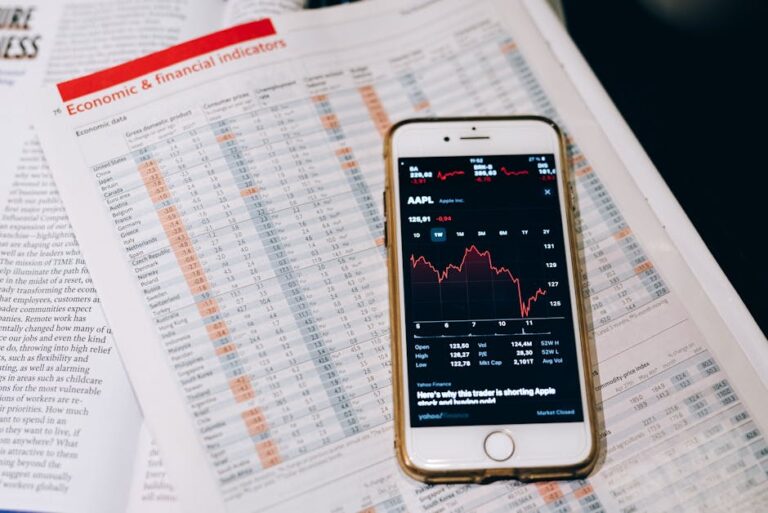You ever get that feeling the internet is reading your mind? You check out a pair of shoes on one website, and suddenly, ads for those exact shoes are popping up everywhere you go. On news sites, in your favorite apps, even on that weird blog about competitive cheese rolling. It’s not magic, and it’s not really mind-reading. A lot of the time it’s just Google Display Ads doing their job.
It is these visual ads, the banners and videos you see scattered across the web, that are a big part of what we’re talking about. For any business trying to get noticed in 2025, figuring out this system is a big deal. It’s not just about annoying people with pictures of shoes. It’s a whole system for finding customers, reminding them you exist, and getting them to actually buy your stuff. And how it works is, well, it’s pretty interesting when you get into it.
What Exactly Are We Talking About with Google Display Ads?
So, let’s back up. When people say “Google Ads,” they often think of the text ads at the top of a search page. That’s Search advertising.
Display advertising is different. It’s the visual cousin.
It’s about showing image-based ads across a massive network.
This is what’s called the Google Display Network, or GDN for short.
It’s a huge collection of websites blogs, and apps that have agreed to show Google’s ads. We’re talking millions of sites.
Think of it like digital billboards. But instead of one billboard for everyone on the highway, these billboards change based on who’s driving by.
That’s the whole game right there. Showing the right ad to the right person.
The Real Ways Display Ads Get You More Business in 2025
So how does putting a picture on some random website actually help you? It’s not just about throwing stuff at the wall and seeing what sticks. It’s more targeted than that, a lot more. The system has gotten pretty smart over the years, and it’s built to get you results in a few specific ways. It’s generally considered to be a key part of a full marketing plan.
Getting in Front of People Who Don’t Know You Exist
This is the big one. Brand awareness.
People can’t buy from you if they don’t know you’re a thing.
Search ads are great for catching people who are already looking. But what about everyone else?
Display ads let you show up where your potential customers are just hanging out online.
You can target them based on all sorts of stuff:
What kinds of topics they’re interested in (like home gardening or classic cars).
Their general demographics, like age and location.
What websites they’ve visited in the past.
It’s about planting a seed. They see your logo. They see your product. They might not click right away.
But next time they need what you sell, your name will be rattling around in their head.
The Magic of Following People Around (aka Remarketing)
Okay, this is where it gets a little creepy but it works.
Remarketing is the technical term for those ads that follow you.
Someone visits your website. They look at a product, maybe add it to their cart but then they leave.
With a little piece of code, you can then show them ads for that exact product as they browse other sites on the GDN.
This is super powerful. It’s a gentle nudge, a reminder. “Hey, remember this cool thing you wanted?”
Typically, people need to see a brand multiple times before they buy. Remarketing does exactly that.
It is this constant reminding that often pushes a “maybe” into a “yes.”
Finding New Customers Who Act Like Your Best Ones
Then there’s the other thing. Finding new people.
Google’s computer brain has gotten very good at pattern recognition.
You can give Google a list of your best customers. Maybe it’s a list of people who have bought from you, or people who signed up for your newsletter.
Google’s system analyzes what these people have in common. What sites they visit, what they search for, their general online behavior.
Then it goes out and finds other people across the internet who act just like them. These are called “Similar Audiences.”
You’re basically telling Google, “Go find me more people like these,” and it does.
This is way better than just guessing who your customers are. You’re using real information to find new leads.
Isn’t Display Advertising Just for Big Brands with Big Money?
A lot of people think this is just a game for giants like Nike or Coca-Cola.
That used to be more true. But not anymore.
The good thing about Google Ads is you have a ton of control over your budget.
You can set a daily spending cap. So you’ll never accidentally spend a fortune.
You can start small. Even $10 or $20 a day can start getting your ads seen by thousands of people.
Plus, you can choose how you pay. You can pay per click (CPC), so you only pay when someone actually clicks your ad.
Or you can pay per impression (CPM), which is good for just getting your name out there.
Small businesses can totally use this to compete. They can be really specific with their targeting, like only showing ads to people within a 10-mile radius. A big national brand can’t easily do that.
Making Your Display Ads Actually Work (And Not Annoy People)
Just running ads isn’t enough. Bad display ads are everywhere, and they just become background noise.
You have to make them good.
First, your ad creative matters. The picture or video needs to be clear and grab attention. Don’t cram a novel into a tiny banner ad.
Have a clear call to action. What do you want people to do? “Shop Now.” “Learn More.” “Get a Free Quote.” Tell them.
Second, your landing page is important. When someone clicks your ad, the page they land on needs to match the ad.
If your ad shows a red bike, the page better have that red bike right there. Making sure your landing page matches the ad is a thing people forget.
Finally, you have to watch your results. Look at what’s working and what isn’t.
Which ads get the most clicks? Which audiences are buying stuff? Turn off the bad stuff and put more money into the good stuff. It’s a constant process of tweaking.
Answering Your Questions on Google Display Ads
How does Google Display Ads grow marketing results for advertisers, really?
They grow results in three main ways. First, they build brand awareness by getting your visual ads in front of tons of people who don’t know you yet. Second, they use remarketing to bring back people who have visited your site but didn’t buy. And third, they help you find totally new customers by targeting people who behave like your existing best customers.
Are display ads better than search ads?
They’re not better or worse, they’re just different tools for different jobs. Search ads are amazing for capturing people who are actively looking for a solution right now. Display ads are better for creating initial demand, reminding people about your brand, and finding customers early in their buying journey. Most good strategies use a mix of both.
How much should I spend on display ads?
There’s no magic number. You can start with a small daily budget, like $10-$20, to test the waters. The key is to measure your return. If you spend $100 and make $300 in sales, you’ll probably want to spend more. Start small, see what works, and then scale up your budget based on the results you’re getting.
How do I know if my display ads are working?
You look at the numbers. In your Google Ads account, you can track things like impressions (how many times your ad was seen), clicks, and click-through rate (CTR). More importantly, with conversion tracking set up, you can see how many people who clicked your ad went on to make a purchase, fill out a form, or take whatever action you want them to take. That’s how you measure your real return on investment.
Will display ads still work in a cookieless world?
The short answer is yes but it’s changing. Google is moving away from third-party cookies for tracking. They are developing new methods, like their “Topics API,” which groups people into interest categories without tracking them individually across sites. So targeting will still be possible, it will just be done in a way that is more protective of user privacy. Advertisers will just need to adjust their strategies a bit.
Key Takeaways
Google Display Ads are the visual ads you see on websites and apps all over the internet.
They’re great for making people aware of your brand, even if they aren’t searching for you.
Remarketing is a major feature, letting you show ads to people who already visited your site.
You can find new customers by targeting audiences that are similar to your current ones.
You don’t need a huge budget; you can start small and control your daily spending.
For your ads to work well, they need good design, a clear message, and a matching landing page.
















